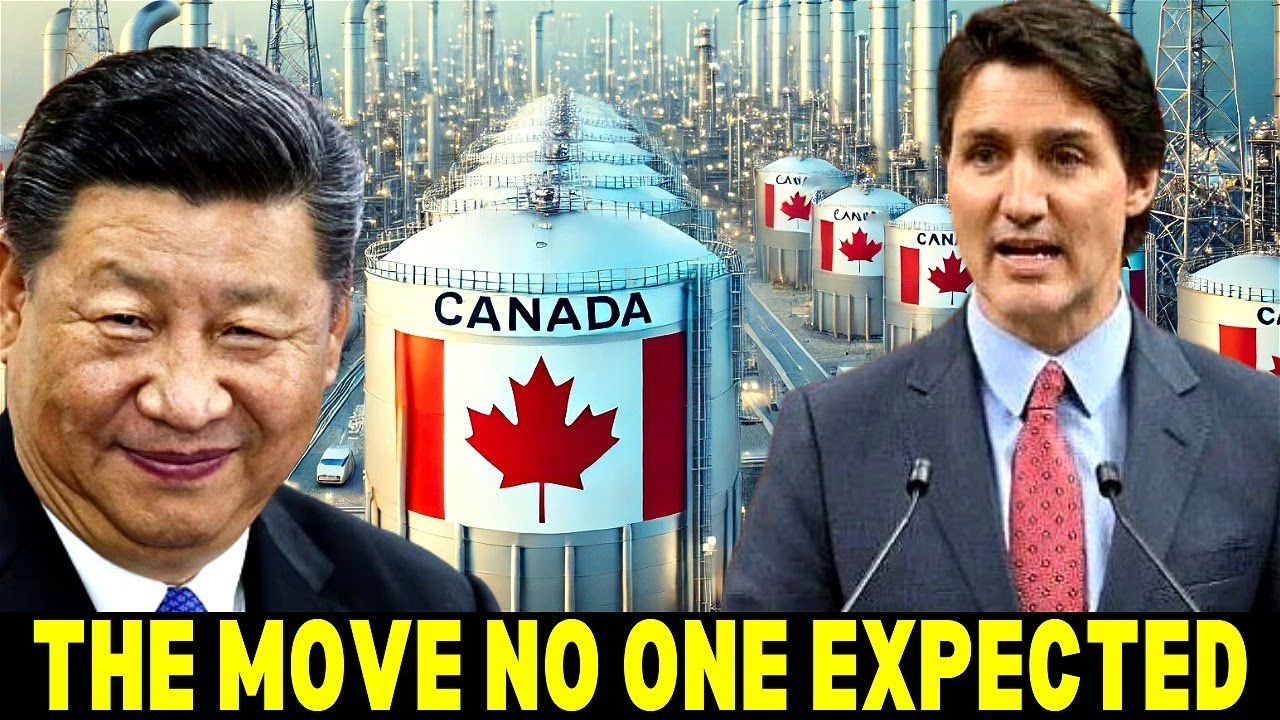Canada Just Opened a Backdoor for China—Unleashes New Oil Trade Route to Bypass the U.S.
Washington thought Canada would hesitate. They assumed negotiations, slow diplomacy, maybe even concessions. Instead, Canada did the unthinkable—cutting a direct path to China, bypassing the US entirely. For years, the US had a chokehold on Canada’s energy exports. Almost every drop of crude flowed south. Now? That grip is slipping.
New tariffs. Rising tensions. And a pipeline that just changed the rules forever.
This isn’t just about oil. It’s about control. And for the first time in decades, Canada is making its own rules.
The Trans Mountain Pipeline expansion now pumps 890,000 barrels per day straight to the Pacific, giving Canada access to global markets. China? The biggest winner. Canada? Finally breaking free. And the US? Losing leverage by the day. With the global energy landscape shifting, Canada is playing smart—diversifying its buyers to avoid dependence on a single market. A 10% tariff on Canadian oil was the final straw. Washington assumed Canada would absorb the costs. Instead? Canada turned east. Why beg the US to buy when China is eager to secure long-term deals? Canada saw an opportunity. And they took it. Canada had watched as other energy exporters—like Russia and Saudi Arabia—secured long-term energy partnerships with China. Now, Canada is doing the same.
If You Like This Video; Like, Share, Comment And Subscribe. This Means A Lot To Us!
Thanks For watching Our Video: Canada Just Opened a Backdoor for China—Unleashes New Oil Trade Route to Bypass the U.S.
Information and Usage Disclaimer
Content shared here is produced under the guidelines of fair use as outlined in Section 107 of the Copyright Act of 1976. This allows for use in teaching, commentary, news reporting, criticism, scholarship, and research, all legally protected under fair use. For any related questions, contact us at techrevolution.inquiry(at)gmail.com. We will adjust or remove content as needed.
China isn’t just buying oil. They’re locking in supply for the long haul. Beijing wants energy security, and Canada’s shift is a perfect opportunity. China has been actively diversifying its energy sources, securing long-term contracts with nations like Russia, Venezuela, and Iran. Now, Canada joins that list. China’s strategy isn’t just about short-term deals—it’s about building lasting trade relationships that bypass US influence. If the US tries to retaliate, China’s contracts with Canada could make a policy reversal difficult.
On the surface, it looks like China simply took advantage of Canada’s shift. But in reality? Beijing saw this coming—and they were ready.For years, China silently expanded its energy infrastructure to reduce its dependence on OPEC and secure diverse crude sources. Now? Those investments are paying off. Refinery Upgrades: China spent billions upgrading refineries to handle heavier crude—perfect for Canada’s oil sands. Pipeline Expansion: Major crude pipelines, including the China-Russia ESPO pipeline, were expanded to integrate new supply routes. Port Modernization: Key oil terminals, including those in Qingdao and Dalian, have been expanded to handle more incoming shipments.
Could Canada completely halt exports to the US? It’s unlikely—for now. But with new buyers, Canada holds leverage like never before. If tensions rise? Washington could face a real energy crisis. The threat of a Canadian oil supply cut could force Washington to reconsider its trade strategies.
For decades, Canadian crude was a core piece of U.S. energy security. That balance? It’s shifting.
Option 1: Find a new supplier. But who?
Venezuela? Unstable and under sanctions.
Saudi Arabia? Politically complicated.
Domestic U.S. shale? Not a fit—refineries need heavy crude, not light oil.
Option 2: Pressure Canada to stay in line. But Ottawa? It has other buyers now.
The U.S. still gets Canadian oil—but not on its terms anymore. The Unexpected Winners—Who Else Benefits From Canada’s New Oil Route? It’s easy to focus on the three biggest players—Canada, the U.S., and China. But this shift? It’s sending ripple effects across the global energy market.
More Details In The Video






























